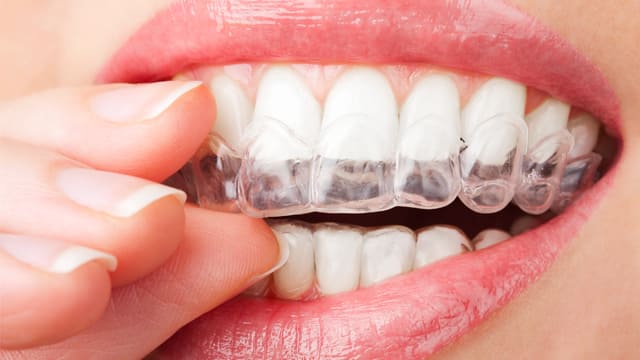
Many individuals are dissatisfied with how their smile looks, yet cosmetic dentistry procedures like veneers may provide relief by covering minor discolorations, damage or uneven surfaces in teeth to improve its aesthetic appearance.
They are custom-crafted from porcelain or resin composite and designed to match the appearance of natural teeth. They’re stain-resistant – making them an effective solution for correcting issues that cannot be remedied with dental fillings alone.
Table of Contents
They Are Made to Measure
As opposed to teeth whitening, they cover an entire tooth rather than just its surface layer, making them the ideal solution for fixing discolored, gapped, chipped or misshapen teeth. Some dentists specialize in creating stunning veneers with natural-looking results in only two or three appointments that will transform your smile.
At the outset of veneer procedures, your dentist will assess the condition of your mouth before extracting a small amount of enamel (about half a millimeter) to encourage proper placement. Once this step has been completed, they will make an impression of each tooth or teeth in question and send it off to a lab which then constructs dental veneers – this usually takes 1-2 weeks during which temporary restorations may be placed on them to help visualize what the final result may look like and ensure color and shape accuracy are correct.
Expect some discomfort both during and after your procedure, though your dentist should provide topical anesthetic to ensure your comfort throughout it. After applying cement to your teeth, however, a sensation known as bonding sensitivity may occur which lasts several days but can be managed with over-the-counter pain relievers or warm water rinses.
Now there are lots of choices, but porcelain veneers are durable and will look like natural teeth for many years, yet do not resist stains as well as natural teeth do. Therefore, good oral hygiene practices such as regular brushing and flossing are crucial to maintaining both your false teeth and natural teeth.
They Are Natural-Looking
They are custom-crafted for every patient to meet their smile goals and match natural teeth perfectly. Unlike artificial crowns, they are designed to blend in seamlessly and only you and your dentist should notice they’re there! Depending on their material composition, they may also be stain-resistant or translucent for an improved natural appearance.
Porcelain is the go-to material for dental veneers, although resin composite and Lumineers may also be options. Porcelain offers natural-looking results as it blends in with tooth enamel colors seamlessly – it makes it hard to tell where they begin and end! Plus, porcelain resists staining and damage better than other materials.
Before recommending them to you, a cosmetic dentist will carefully assess both your mouth and gums. They will take digital X-rays, photographs and mold impressions of your mouth in order to understand its size and shape, before devising a custom treatment plan with tailored recommendations that will create veneers that fit seamlessly and appear natural within your mouth.
Prior to applying them, a dentist will first clean and scrub a patient’s mouth in order to eliminate bacterial build-up that could pose an infection risk after the procedure. They’ll also create a rough surface on each tooth so they adhere securely in their place.
Once they have been created, they will be applied using an adhesive bonding agent and applied directly onto their patient’s mouth with adhesive cement. After setting, these veneers will become permanently adhered and can no longer come off easily; permitting patients to continue eating and drinking normally after their procedure has taken place.
They Are Easy to Clean
They are designed to withstand normal wear and tear of the mouth, yet can stain without proper oral hygiene practices being followed. Therefore, it is crucial that people make regular trips to their dentist for cleaning and maintenance so that their veneers will last as long as possible.
There are two kinds of veneers, porcelain and resin composite. According to this article, porcelain veneers are strong yet thin caps placed over teeth by dentists to enhance their appearance, whiten them if desired and prevent staining for up to 10 years with proper care. They’re resistant to staining too!
Resin composite veneers are made of moldable resin that dentists can hand-sculpt to fit the size and shape of each tooth, typically for less money than porcelain veneers and lasting up to 10 years with proper care.
Proper oral hygiene practices can also play an essential role in keeping veneers and natural teeth in good health. It’s recommended to brush at least twice each day with non-abrasive toothpaste and soft bristled toothbrush, use antiseptic mouthwash regularly, reduce bacteria buildup through rinsing the mouth with antiseptic rinse, visit your dentist regularly for cleanings, polishes, and examinations – this way your smile stays beautiful and your smile stays clean and healthy!

They Are Permanent
Many people are unhappy with how their teeth and mouth appear, if this describes you, cosmetic dentistry could help change this. Cosmetic dentists specialize in creating transformational smiles; one tool they employ to do this is veneers bonded directly onto front of teeth to correct chips, cracks, gaps between them, minor misalignment and discoloration issues.
Porcelain is an indestructible material that emulates the look and feel of natural tooth enamel, while being stain-resistant to staining treatments like bleaching. If they interest you, speak to your dentist at The Dental Room about whether this procedure would be right for you and see whether there is any risk considerations involved. Though they’re very common, they are a very involved process that should be understood before undertaking.
Recovery after veneer placement should be fairly swift. Your gums may feel slightly sensitive initially, but this should subside quickly. Some people experience bonding sensitivity which feels similar to biting into something cold and can last from days or even weeks after veneer installation.
Once you get them, it is best to avoid eating or drinking anything that might stain them, such as red wine, dark sodas, and coffee. If necessary, use a straw to ensure the liquid does not touch your veneers directly. Also try not chewing hard objects such as pens or ice and stop grinding or clenching your teeth at night or wear a mouth guard in order to do this safely.







